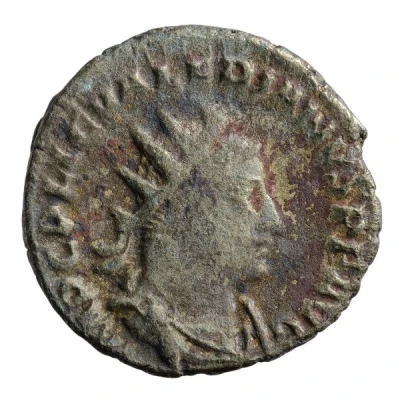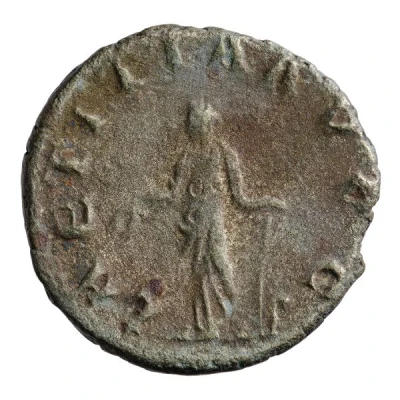


© Münzkabinett der Universität Göttingen (CC BY-NC 4.0 DE)
Antoninianus - Valerianus LAETITIA AVGG; Laetitia
| Silver | 2.7 g | 20 mm |
| Issuer | Rome › Roman Empire (27 BC - 395 AD) |
|---|---|
| Emperor | Valerian (Publius Licinius Valerianus) (253-260) Gallienus (Publius Licinius Egnatius Gallienus) (253-268) |
| Type | Standard circulation coin |
| Years | 256-255 |
| Value | Antoninianus (1) |
| Currency | Antoninianus, Reform of Caracalla (AD 215 – 301) |
| Composition | Silver |
| Weight | 2.7 g |
| Diameter | 20 mm |
| Shape | Round (irregular) |
| Technique | Hammered |
| Demonetized | Yes |
| Updated | 2024-10-05 |
| Numista | N#286122 |
|---|---|
| Rarity index | 97% |
Reverse
Laetitia, draped, standing left, holding wreath in right hand and anchor in left hand.
Script: Latin
Lettering: LAETITIA AVGG
Translation:
Laetitia Duorum Augustorum.
Joy of the two emperors (Augusti).
Comment
Mass varies: 2.29–3.176 g;Diameter varies: 19.64–20 mm;
Example of this type:
Münzkabinett der Universität Göttingen
Source:
Online Coins of the Roman Empire (OCRE)
Interesting fact
The Antoninianus - Valerianus coin was issued during a time of great turmoil in the Roman Empire, known as the Crisis of the Third Century. This period saw a series of civil wars, corruption, and external invasions that threatened the very survival of the empire. Despite these challenges, the Roman Empire continued to produce coins like the Antoninianus - Valerianus, which featured images of the emperors and their families, as well as various gods and goddesses. The coin's design and message were meant to promote the ideals of Roman culture and reinforce the power of the emperor, even in the face of adversity.

